The ongoing wave of RPGs from yesteryear getting remasters and remakes continues with the “remake” of one of PlayStation 1’s biggest RPGs, Dragon Quest VII. We often have the debate about what constitutes a remake or a remaster, but in this case, Square Enix decided to call this remake Dragon Quest VII Reimagined. So you may be wondering, just what is a reimagined game? Thanks to the people at Square Enix, I was invited to play a small portion of Dragon Quest VII Reimagined. I played small sections of the Wetlock and Emberdale islands, and got to interview the game’s producer, Takeshi Ichikawa. I will do my best to go over everything I learned in this article, but I encourage you to read the full interview as well.
If you have ever played any version of Dragon Quest VII, you know that this game is long. Like “100+ hours to just beat the story” long. It involves so many different sub-stories on each different island, a prologue that takes almost two to three hours to reach its first battle, and involves so much backtracking throughout the game that sometimes it felt more like a chore to play. And it’s understandable why 2000-era Enix did this. One of the biggest gaming franchises in Japan was making the leap from SNES to PlayStation, so going from Dragon Quest VI to VII, it also needed a lot of content to show how the franchise was evolving.
So while it wasn’t perfect, behind it all is a fantastic RPG and maybe one of the best Dragon Quest games. So while other Dragon Quest remakes may have just needed a few graphical overhauls or some tweaks, it’s evident that Dragon Quest VII needed something more. Thus, Square Enix’s attempt to “reimagine” the game. To do so, they focused on three main aspects: visuals, story, and battle. So let’s take a look at all three and how they have changed.
Dragon Quest VII Reimagined‘s Visuals: Dolls & Dioramas
The first thing you will notice about Dragon Quest VII Reimagined is that the game looks similar to Dragon Quest XI. The obvious difference is the tonal shift to a more doll-like look for the characters. This was intentional, and a lot of research went into this when the game was in early development. The development team noticed that this doll-like look was pretty well regarded across various forms of media worldwide and aimed to mimic it. The short and adorable look also harkens back to Toriyama’s original artwork for the game, so it works on that level too.
The in-game character models are all based on real, lifelike dolls created for DQVII Reimagined, so it really gives off a feel of playing with tiny figurines. In addition, exploring the towns feels like walking through a diorama, adding to the experience. The animations are all very well done as well. Faces and body movement are expressive, even from the enemy and NPC characters, and battle animations are sometimes as over the top as in Dragon Quest XI. DQVII Reimagined also plays as smoothly as it looks. Overall, the visuals are a vast improvement over both the original PS1 and 3DS versions of the game.
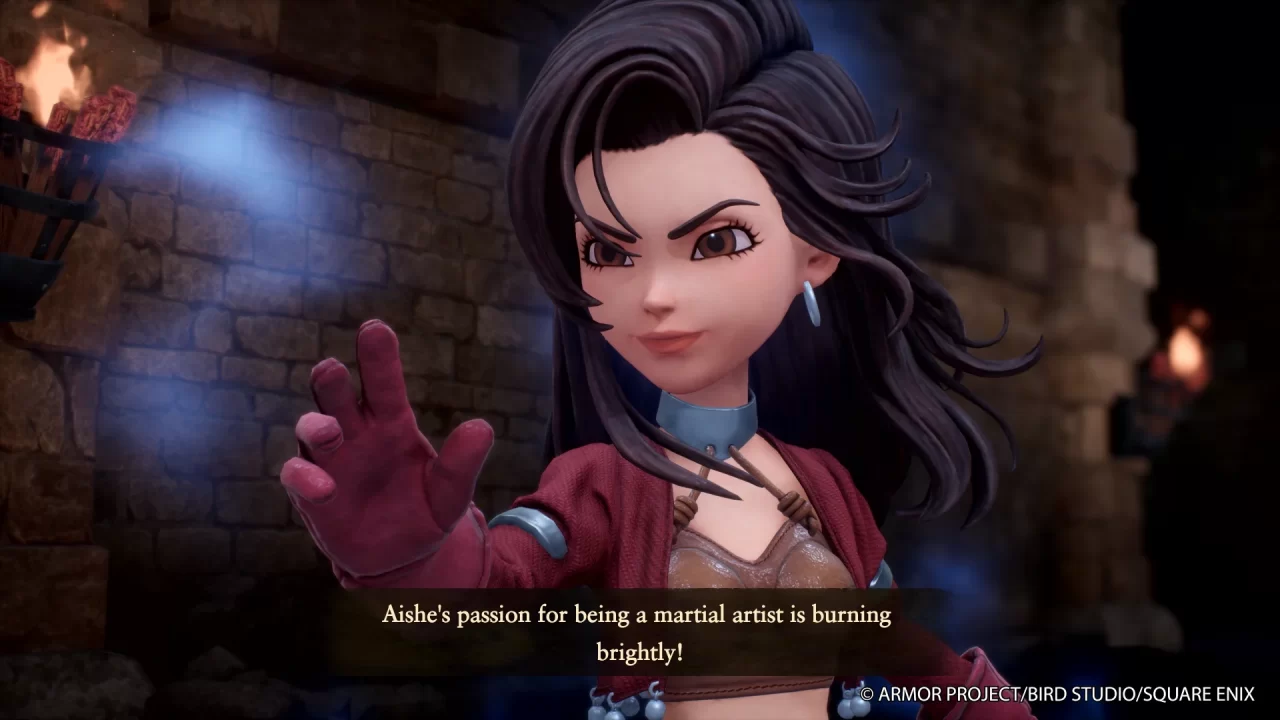
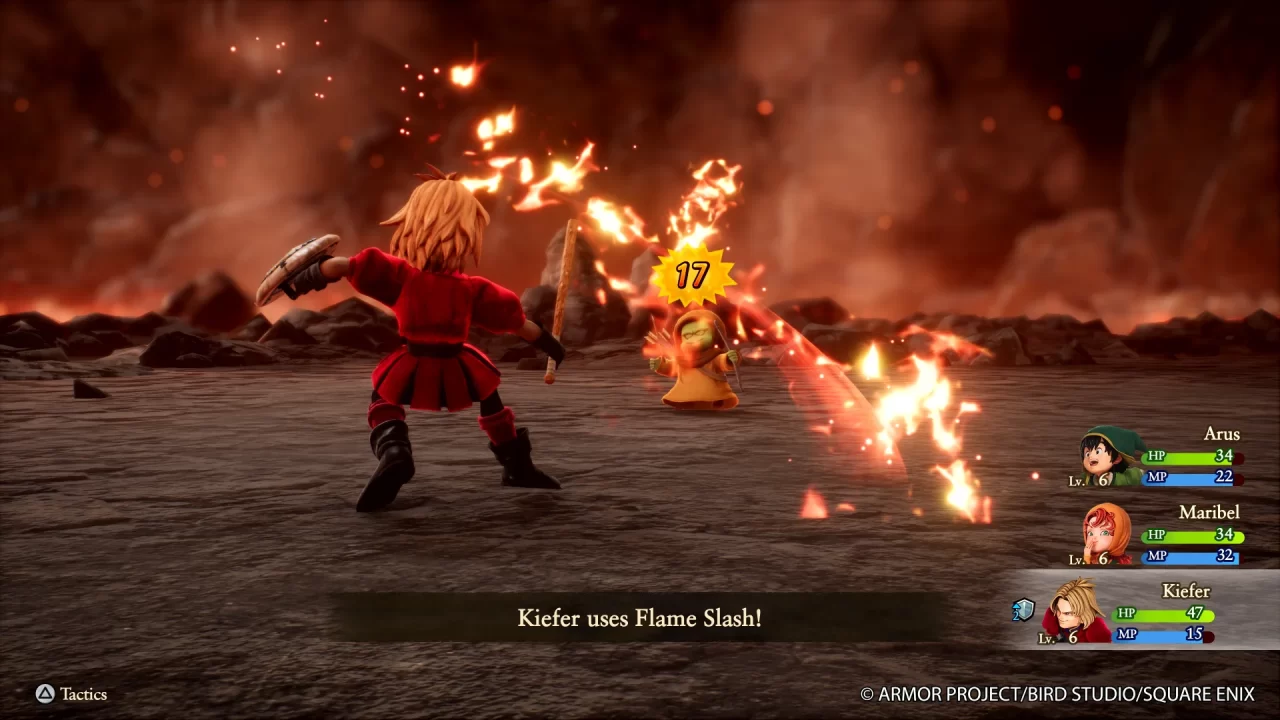
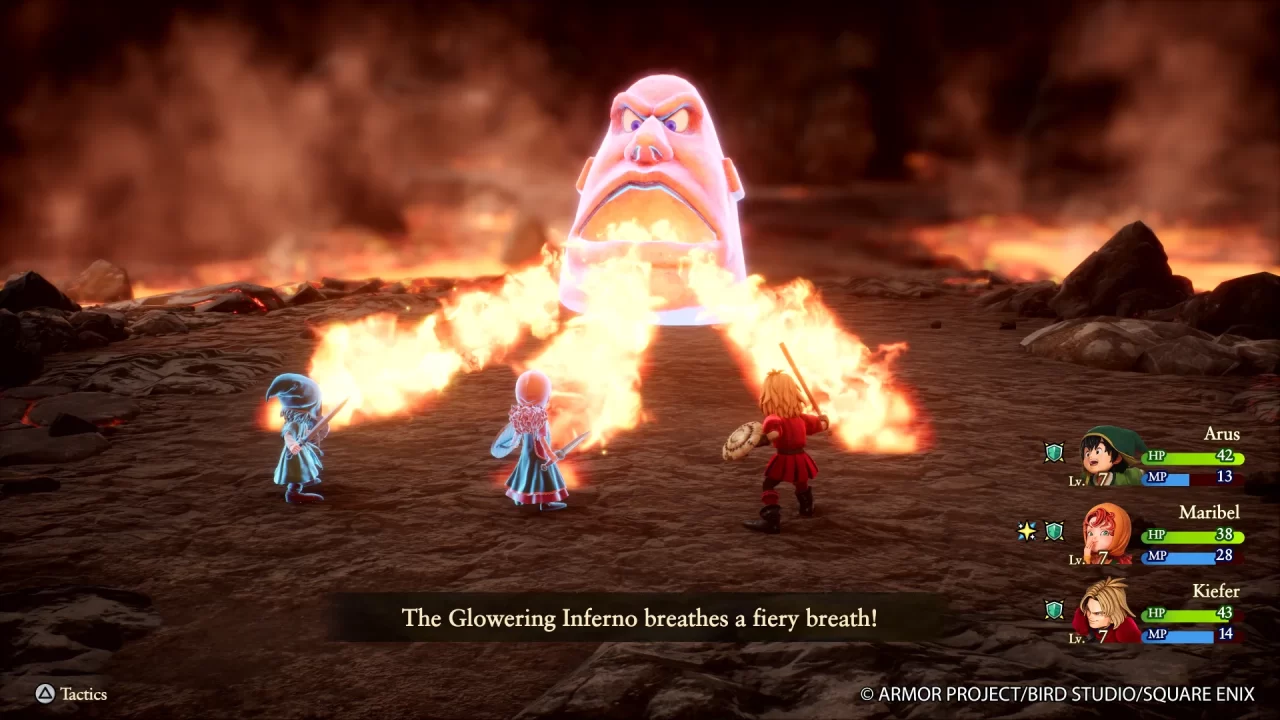
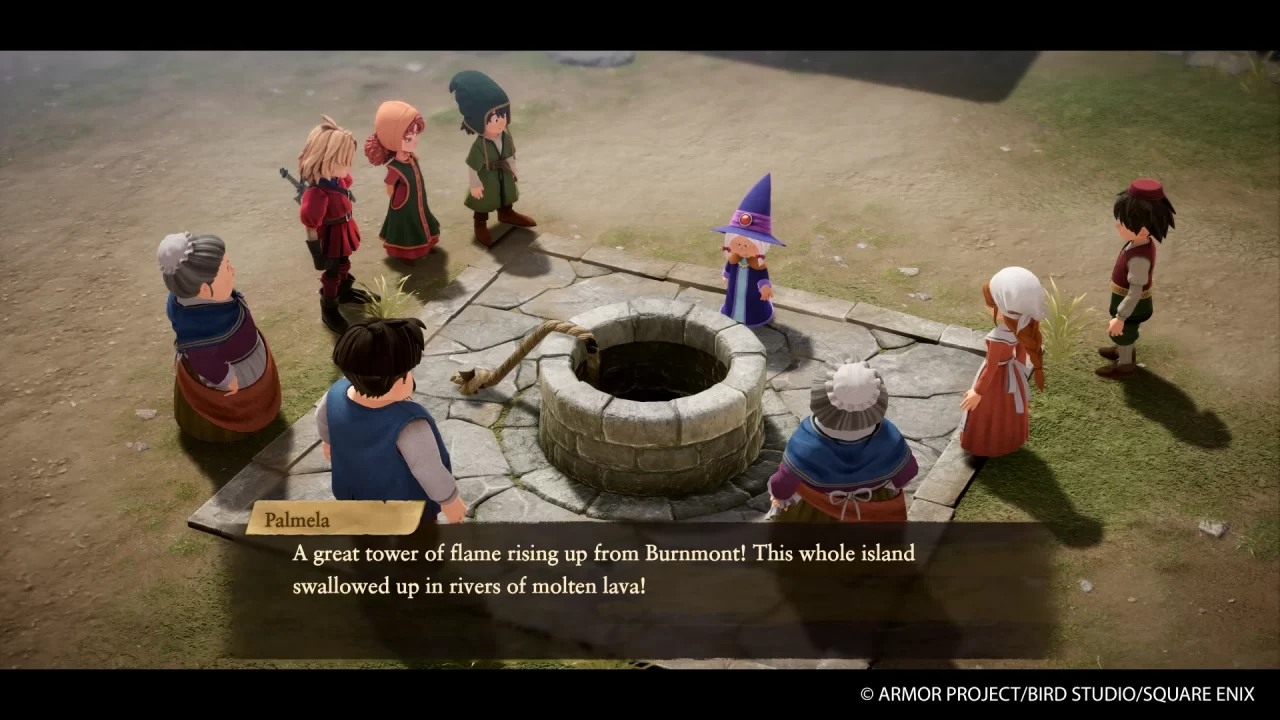
Battles & Vocations
Now, to be fair, battles in Dragon Quest games rarely ever change. They are turn-based affairs, but each game introduces new systems. For instance, the original Dragon Quest VII expanded the vocation systems from DQIII and DQVI. But DQVII Reimagined takes things a step further. If the graphics look strikingly like Dragon Quest XI, you better bet your bottom dollar that battles also play a lot like DQXI.
Instead of trying to emulate the first-person style of the old 2D Dragon Quest games — including the original DQVII — the developers instead decided to take this new art direction and bring it to life in and out of combat. Battles are quick and snappy, and animations for the characters, enemies, and bosses are all different, plentiful, and fun to watch. It plays like and borrows heavily from Dragon Quest XI, but there are two big changes here.
DQVII Reimagined introduces Let Loose Attacks, which are similar to DQXI’s Pep-Up attacks. They offer a variety of different power-ups in battle after you have been attacked or attacked several times. Which ones you get to use depend on the vocations that the character is using. Yes, vocations plural, because Dragon Quest VII Reimagined lets you now use two vocations at once with the new Moonlighting system.
Vocations are basically Dragon Quest’s job system, and much like Final Fantasy, some games have them and some don’t. The original Dragon Quest VII’s big addition was the inclusion of over 50 vocations to the system. In Reimagined, they have been streamlined a bit. First, you can now equip and learn two vocations at once, giving each character access to more spells, abilities, and Let Loose attacks. This change also lets you work on other vocations without having to feel weak by starting over from the beginning each time you change vocations. You can keep a maxed vocation for its stats and abilities while leveling another on the side.

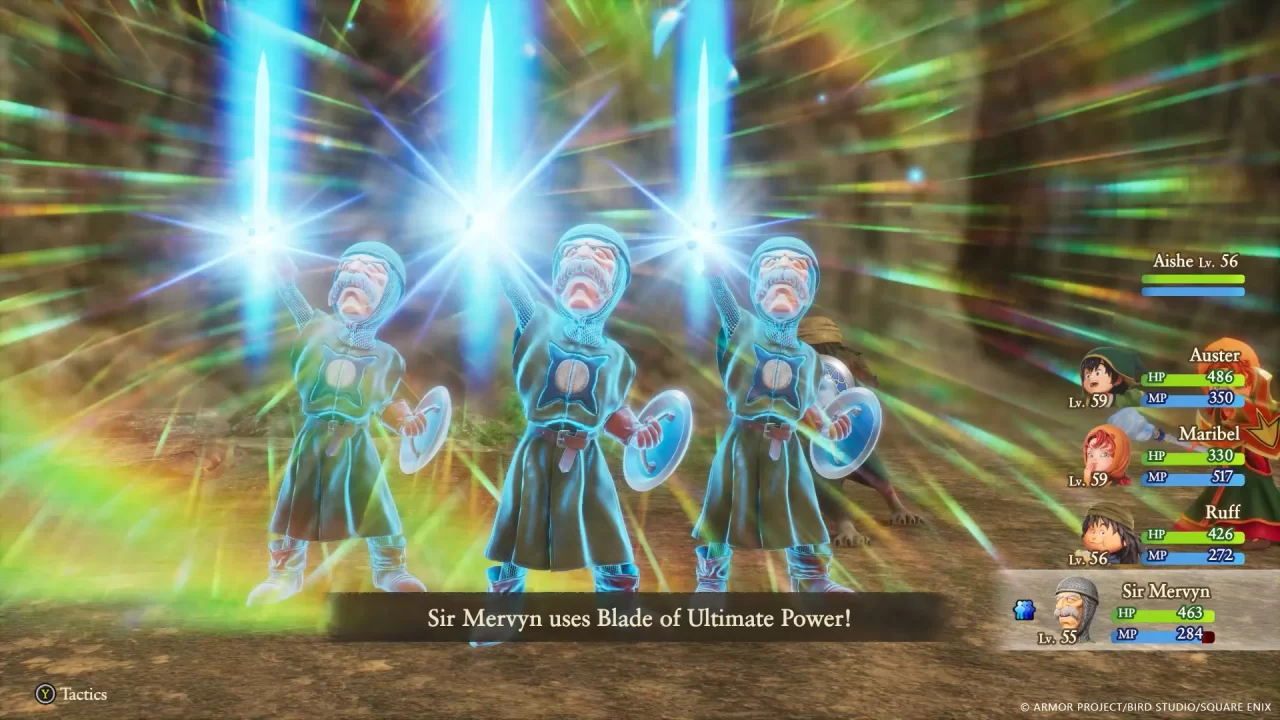
The other significant change is that by pressing down on the D-Pad, you can access the Career Sphere and talk to Jacqui from the Alltrades Abbey whenever you want to change vocations. This eliminates one of the biggest issues with other versions of the game: backtracking to Alltrades Abbey every time you mastered a vocation or wanted to change them. This is a fantastic quality-of-life feature.
There is another change in that there are no more monster vocations in Dragon Quest VII Reimagined. Instead, you can now equip Monster Hearts as accessories to boost stats and give additional benefits in combat. There is also now the Monster Master vocation, which seems to incorporate a lot of the abilities of the old monster vocations into one. So all together, the battles in the original Dragon Quest VII, which could be a pretty boring affair, have been significantly changed to possibly the best iteration of Dragon Quest’s turn-based system. Gotta love those job systems in RPGs!
Finally, Dragon Quest VII Reimagined offers several difficulty options that let you adjust many aspects of combat to suit your preferences. Dragon Quest can sometimes feel unfair in certain aspects, but others love that unfairness, so now you can manually adjust things like damage dealt, EXP gained, and gold earned. These options are nice additions, because the original Dragon Quest VII can be pretty hard in certain places and super easy in others. So experiment all you want to find that nice balance.

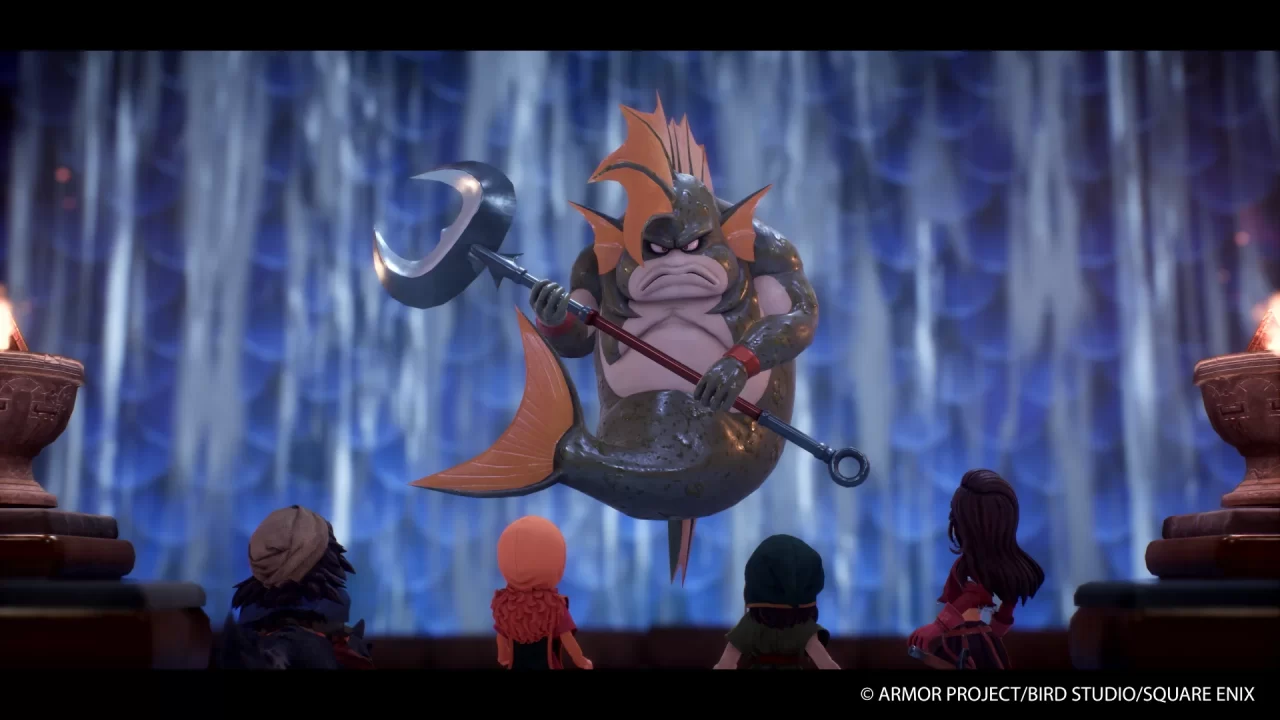
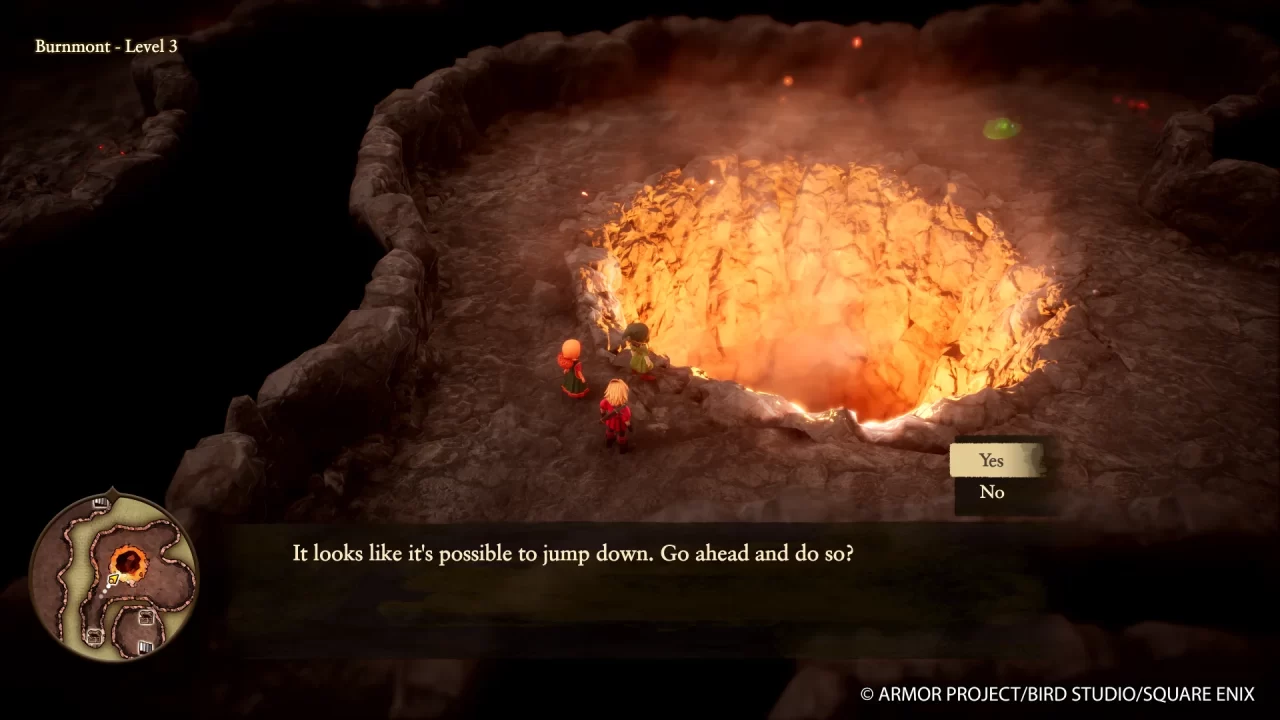

Streamlined Story
The changes to the story in Dragon Quest VII Reimagined are where fans might get a bit divisive. I don’t want to get into spoilers, but the two sections I played seem to play out pretty much one-to-one compared to their previous incarnations, including all the really dark parts of these stories. But this is not true for some other parts of the game. As I discussed with Takeshi Ichikawa in our interview, some parts of the game and the overall story have been changed. Three islands have been cut from the story, and four have become optional sidequests to do at your leisure.
But most importantly, they have added brand new stories to Reimagined that did not appear in either the PS1 or 3DS versions. These stories will build on the characters’ relationships and flesh them out more than ever before. We have already seen a sneak peek at these with the recent Kiefer story trailer. The goal was to expand Dragon Quest VII while still keeping many of its darker tones throughout the story. As someone who thinks Dragon Quest VII had some unnecessary additional fluff that can really turn people off halfway through, I am looking forward to seeing how things are handled this time around. And more importantly, I am looking forward to seeing more stories that directly involve the main characters, rather than filler story arcs.




I really enjoyed my time with Dragon Quest VII Reimagined, even in the short time I had to play. If you have been trying to wait patiently for Dragon Quest XII, and if the 2D-HD remakes of DQI–III haven’t been your thing — or if you’ve finished them all — then Dragon Quest VII Reimagined is sure to scratch that itch. I really hope this kind of reimagining is in the cards for games like Dragon Quest V and Dragon Quest VIII as well.
I want to thank Square Enix once again for inviting us out to play one of my favorite Dragon Quest games and get a tiny taste of what’s in store. My only wish is that I got to play more of the game, but there will be plenty of time for that on February 5th, 2026, when Dragon Quest VII Reimagined launches on PlayStation 5, Xbox Series X|S, Nintendo Switch, Nintendo Switch 2, and PC! Learn more on the game’s official site.




Leave a Reply
You must be logged in to post a comment.